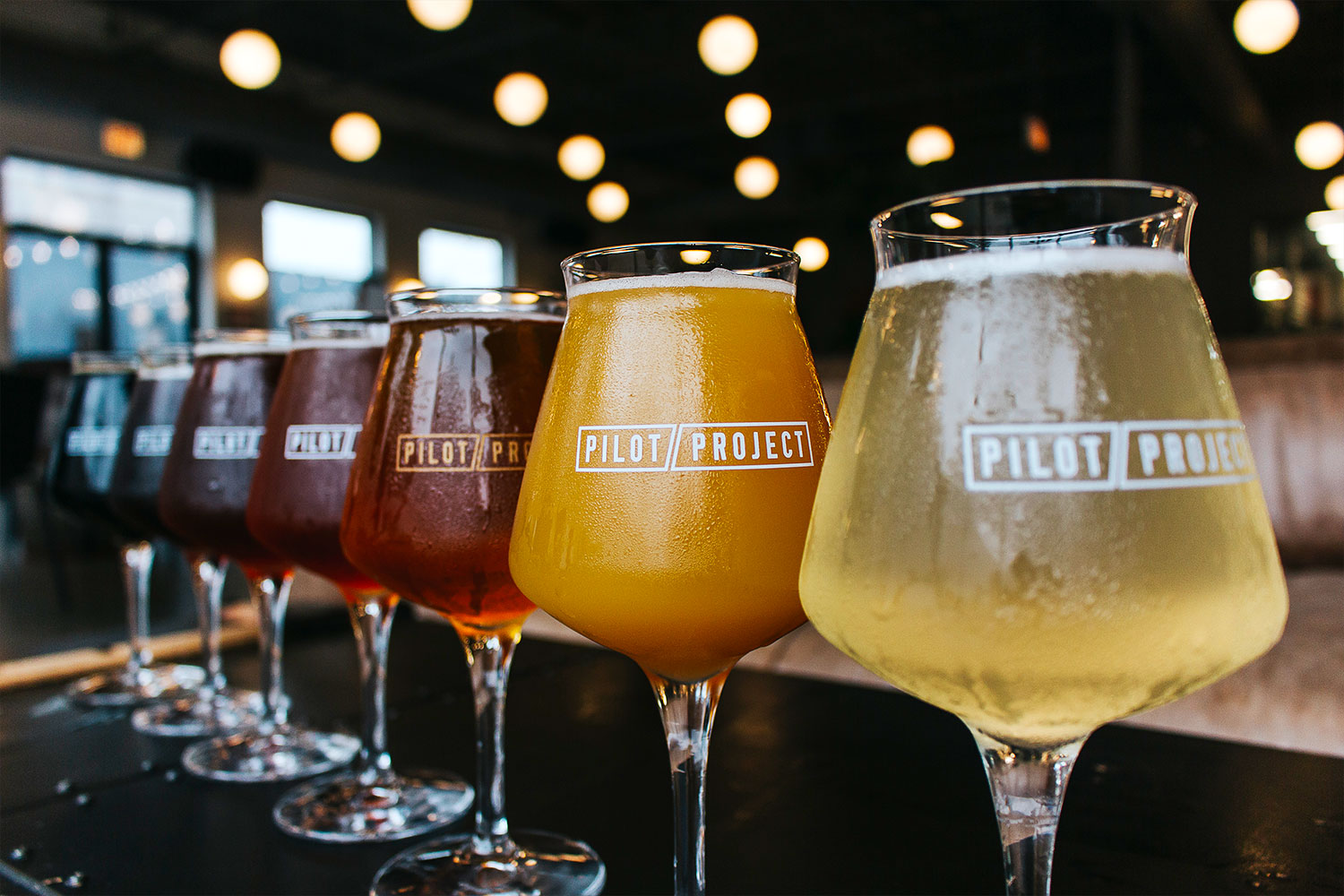I’m far from the first person to point out that craft beer has a bit of a diversity problem. The common stereotype of the craft brewer (a bearded man wearing a flannel shirt who is generally white) is a stereotype for a reason. One reason for this is that craft brewing has a lot of barriers to entry, including finance, branding, facilities, and more. Pilot Project Brewing, with locations in Chicago and Milwaukee, aims to change that by creating an incubator for new brewers.
Pilot Project co-owner Dan Abel is not a brewer by training, which may have something to do with his fresh perspective on the industry. Instead, Abel came up in the music industry, originally as an aspiring musician and then, eventually, as the head of YouTube’s emerging musicians program which helped out artists like Dua Lipa. “If I’m a musician and I want to create product, there are a whole host of resources available to me, and I don’t need to be an expert in all sides of the industry,” explains Abel. “If I want to record an album, I go to a studio, and if I’m good, I work with a label to spread my material, and if I want to tour, I work with a manager and an agent. All of these people lower the barriers to entry.”
Fast forward a few years, and Abel moved to Chicago for a new job and started home brewing (his music hobby was waking up his small child). While he initially thought of opening a craft brewery, he and his partner took a different approach. “Instead of starting a brewery, we decided to look at what it takes to start a brewery,” says Abel. “We looked at each other and said let’s make a recording studio, but for breweries.” That became Pilot Project.
Pilot Project “auditions” brewers who have the skills and ideas, but not the ability to produce at scale. This audition is rigorous, but not dependent on the contacts that the brewers already have in the industry. This is one reason that the crop of brewers that Pilot Project supports is incredibly diverse. “One of the really fun things about lowering the barrier to entry is that you’re flattening the entire space to all people — we’ve launched 14 brands, of which six or seven are female-owned, and we launched the second black-owned brewery to ever launch in Chicago,” says Abel. Pilot Project helps to scale up production for these breweries and also helps them with all aspects of the business, including marketing, exposure, labeling, and distribution. In exchange, Pilot Project makes money by distributing the beers and often takes a small equity stake in the breweries they support. Breweries like Funkytown Brewery, Flora Brewing, Azadi Brewing Company, ROVM Hard Kombucha, and more are part of Pilot Project’s “portfolio” of small producers.
At Pilot Project’s taprooms, the brewery offers a huge variety of beers from the partner brands, allowing beer lovers to discover many new breweries all in one place. The Chicago taproom has been open since 2019, but the Milwaukee location is much newer; it took over the huge space formerly occupied by Milwaukee Brewing Company during the pandemic. Gemma Foods chef Tony Quartaro worked on the menu, and the kitchen is helmed by Ryan Gill — and the food is head and shoulders above what is found at your average brewpub. But the focus is on the beers from the partner brands; while Pilot Project does have its own brand of beer, called Brewer’s Kitchen, it’s not the focus. “Sometimes we stifle our own brand in favor of incubating others,” laughs Abel.
The eventual goal is for Pilot Project to serve as a stamp of approval recognized by beer lovers everywhere. Abel analogizes it to Blue Note Records, one of the definitive jazz labels out of Chicago — for a jazz lover, if it comes from Blue Note, it’s worth listening to. If Pilot Project works with a beer, it’s worth drinking.
Abel didn’t plan to diversify the beer industry but thinks it’s a natural extension of making the process open to everyone. “I don’t want to pretend that I’m a person who sat there and said, gosh darn it, we need to diversify our industry,” says Abel. “I learned from my time at YouTube that when you give creatives a voice, they come from everywhere. This is what the world actually looks like.”



